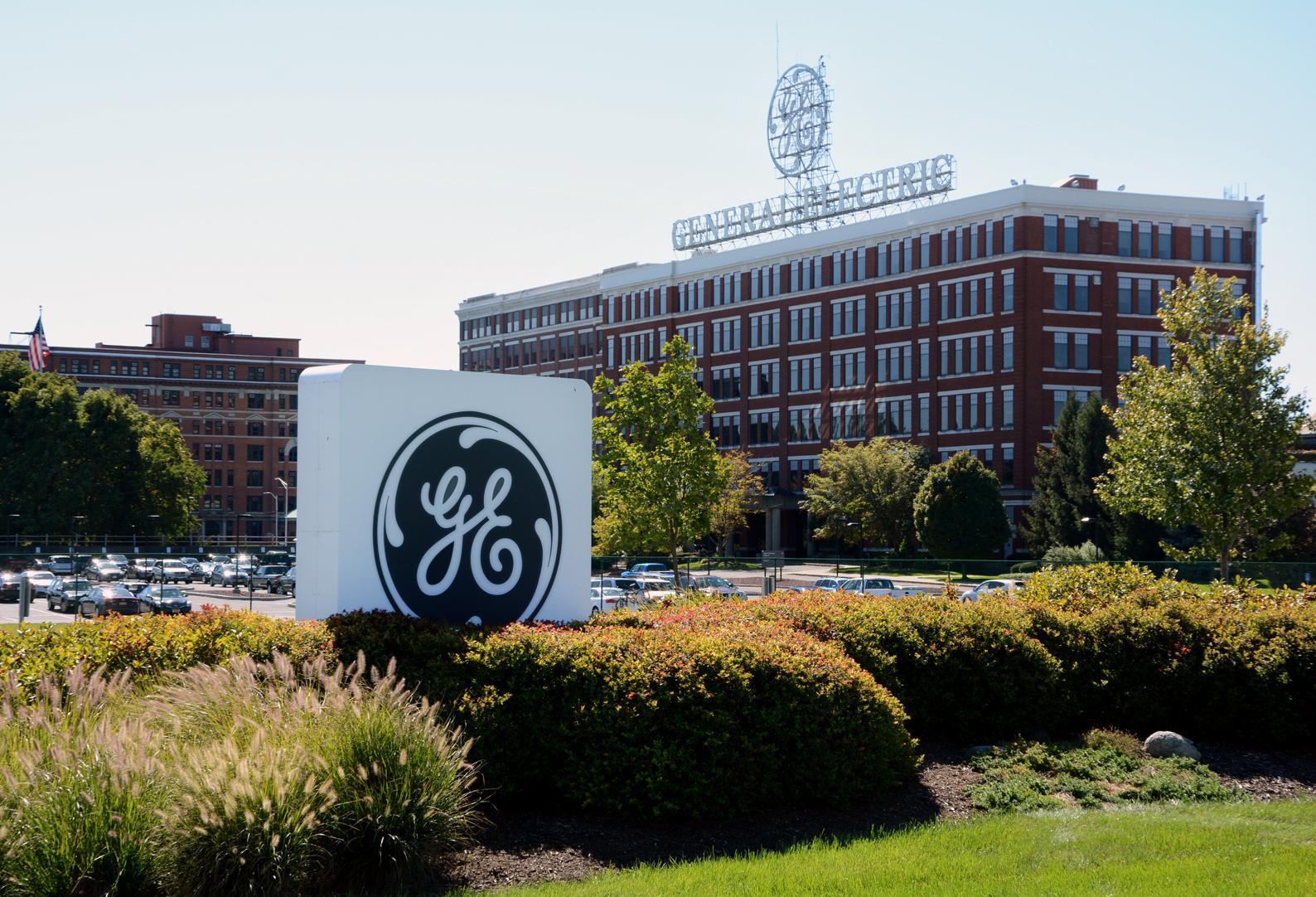General Electric Company
Summary
- General Electric Company (GE) is an American multinational conglomerate and global leader in a wide range of industries.
- It operates in the aviation, power, renewable energy, digital industry, additive manufacturing, and venture capital and finance sectors.
- Recently GE separated its HealthCare business, into an independent publicly traded company.

General Electric Company (NYSE: GE, LSE: GEC) is an American multinational conglomerate headquartered in Boston, Massachusetts. It operates in the aviation, power, renewable energy, digital industry, additive manufacturing, and venture capital and finance sectors. GE is a global leader in a wide range of industries
Recent Developments
GE Vernova announces $50 Million investment & ~200 wind manufacturing jobs in New York1
May 23, 2023; GE Vernova announced that it will invest $50 million at its Schenectady, NY, facility and hire approximately 200 new full-time employees including skilled union operators, manufacturing engineers, and front line leadership to establish a new manufacturing assembly line for its onshore wind business. The site will assemble three key components for GE Vernova’s 6.1 MW turbine.
The manufacturing assembly line will be installed in the building where GE Vernova today continues to manufacture steam turbines and generators, and is anticipated to be completed by summer 2023, with the first set of components produced by early fall.
The recent passage of the Inflation Reduction Act has played an important role in today’s announcement, revitalizing the market, increasing demand for renewable energy and enabling energy security and competitiveness. New York State has also agreed to provide up to $2.5M though Empire State Development’s Excelsior Jobs Program.
Financial Highlights
First Quarter 2023 Results2
April 25, 2023; GE announced results for the first quarter ending March 31, 2023. Total revenues were $14.5 billion, up $1.8 billion for the quarter, driven primarily by increases at Aerospace and Power.
Continuing earnings (loss) per share was $5.56. Excluding the results from its run-off Insurance business, non-operating benefit costs, gains (losses) on purchases and sales of business interests, gains (losses) on equity securities, restructuring costs and separation costs, Adjusted earnings per share was $0.27. For the three months ended March 31, 2023, profit margin was 44.8% and profit was up $7.7 billion, primarily due to an increase in gains on equity securities of $6.1 billion, the nonrecurrence of the Steam asset sale impairment of $0.8 billion, an increase in segment profit of $0.4 billion, an increase in non-operating benefit income of $0.3 billion and the nonrecurrence of Russia and Ukraine charges of $0.2 billion. These increases were partially offset by an increase in restructuring and other charges and separation costs of $0.2 billion. Adjusted organic profit increased $0.5 billion, driven primarily by increases at Aerospace, Renewable Energy and Power.
Cash flows from operating activities (CFOA) were $0.2 billion and $(0.9) billion for the three months ended March 31, 2023 and 2022, respectively. Cash flows from operating activities increased primarily due to an increase in net income (after adjusting for depreciation of property, plant, and equipment, amortization of intangible assets and non-cash (gains) losses related to its retained ownership interests in GE HealthCare, AerCap and Baker Hughes) and a decrease in cash used for working capital. Free cash flows (FCF) were $0.1 billion and $(1.2) billion for three months ended March 31, 2023 and 2022, respectively. FCF increased primarily due to the same reasons.
GE Aerospace
- Delivered double-digit growth in orders, revenue, and operating profit year-over-year driven by commercial momentum and strength in services, as the team improved LEAP output by 53% year-over-year and internal shop visits grew 32%.
- Reached agreement with Air India for the largest LEAP order to date with 800 engines, as well as 40 GEnx and 20 GE9X engines and related services agreements.
GE Vernova
- Increased Renewable Energy orders by 94% and revenue by 5% year-over-year organically led by Grid, as well as improved profit sequentially and year-over-year; and grew revenue at Power by 11% year-over-year organically.
- Reached agreements with TenneT to award GE-led consortiums with multi-billion Euro contracts for Grid Solutions' High-Voltage Direct Current offering to support its 2GW programs in the Netherlands and Germany.
Full Year 2022 Results
Total revenues were $76.6 billion, up $2.4 billion for the year, driven primarily by increases at Aerospace and HealthCare, partially offset by decreases at Renewable Energy and Power.
Continuing earnings (loss) per share was $0.53. Excluding the results from its run-off Insurance business, separation costs, the Steam asset sale impairment, restructuring costs, non-operating benefit costs, debt extinguishment costs, Russia and Ukraine charges, gains (losses) on purchases and sales of business interests and gains (losses) on equity securities, Adjusted earnings per share was $2.62. For the year ended December 31, 2022, profit margin was 1.8% and profit was up $5.1 billion, primarily due to a decrease in debt extinguishment costs of $6.1 billion, a decrease in non-operating benefit costs of $2.3 billion, an increase in segment profit of $0.7 billion, a decrease in Adjusted corporate operating costs of $0.5 billion and a decrease in interest and other financial charges of $0.3 billion, partially offset by a decrease in gains on equity securities of $1.8 billion, separation costs of $1.0 billion, the Steam asset sale impairment of $0.8 billion, an increase in restructuring and other charges of $0.5 billion, a decrease in Insurance profit of $0.5 billion and Russia and Ukraine charges of $0.3 billion. Adjusted organic profit increased $1.5 billion (32%), driven primarily by increases at Aerospace and Power and lower Adjusted corporate operating costs, partially offset by increased losses at Renewable Energy.
Cash flows from operating activities (CFOA) were $5.9 billion and $0.9 billion for the years ended December 31, 2022 and 2021, respectively. Cash flows from operating activities increased primarily due to a decrease in cash collateral paid net of settlements on interest rate derivative contracts, an increase in net income (after adjusting for amortization of intangible assets, non-cash losses related to its interests in AerCap and Baker Hughes and non-operating debt extinguishment costs), an increase in cash from working capital and an increase in cash from all other operating activities. Free cash flows (FCF) were $4.8 billion and $1.9 billion for the years ended December 31, 2022 and 2021, respectively. FCF increased primarily due to the same reasons.

Business Overview
General Electric Company is a high-tech industrial company that today operates worldwide through three segments: Aerospace, Renewable Energy, and Power. The company's products include commercial and military aircraft engines and systems; wind and other renewable energy generation equipment and grid solutions; and gas, steam, nuclear and other power generation equipment. GE has significant global installed bases of equipment across these sectors, and services to support these products are also an important part of its business alongside new equipment sales.
GE Aerospace
Aerospace designs and produces commercial and military aircraft engines, integrated engine components, electric power and mechanical aircraft systems. The company also provide aftermarket services to support its products.
GE has nearly 41,000 commercial engines at work in more than 70% of global airlines, and a diverse portfolio of more than 26,000 military engines.
Commercial Engines and Services – manufactures jet engines for commercial airframes. Aerospace engines power aircraft in all categories: narrowbody, widebody and regional, which includes engines sold by CFM International, a 50-50 non-consolidated company with Safran Aircraft Engines, a subsidiary of Safran Group of France, and Engine Alliance, a 50-50 non-consolidated company with Raytheon Technologies Corporation via their Pratt & Whitney segment. This includes engines and components for business aviation and aeroderivative applications as well. Commercial provides maintenance, component repair and overhaul services (MRO), including sales of spare parts.
Military – manufactures jet engines for military airframes. The company's military engines power a wide variety of military aircraft including fighters, bombers, tankers, helicopters and surveillance aircraft, as well as marine applications. The company provide maintenance, component repair and overhaul services, including sales of spare parts.
Systems & Other – provides avionics systems, aviation electric power systems, turboprop engines, engine gear and transmission components and services for commercial and military segments. Additionally, the company provide a wide variety of products and services including additive machines, additive materials (including metal powders), and additive engineering services.

GE Vernova
GE’s portfolio of energy businesses, now called GE Vernova, is helping the energy sector solve for sustainability, reliability, and affordability. With approximately 54,000 wind turbines and 7,000 gas turbines, GE Vernova helps generate 30% of the world’s electricity.
Renewable Energy
The company's portfolio of business units includes onshore and offshore wind, blade manufacturing, grid solutions, hydro, storage, hybrid renewables and digital services offerings. GE has installed more than 400 gigawatts of clean renewable energy equipment and equipped more than 90% of transmission utilities with its grid solutions in developed and emerging markets.
Onshore Wind – delivers technology and services for the onshore wind power industry by providing a range of turbines. Wind Services assist customers in improving cost, capacity and performance of their assets over the lifetime of their fleet, utilizing digital infrastructure to monitor, predict and optimize wind farm energy performance. The company's Onshore Wind business supports a turbine installed base of approximately 54,000 units, of which, slightly less than half are under service agreements.
Grid Solutions Equipment and Services (Grid) – enables power utilities and industries worldwide to effectively manage electricity from the point of generation to consumption, helping the reliability, efficiency and resiliency of the grid. Service offerings include a comprehensive portfolio of equipment, hardware, protection and control, automation and digital services. Grid is also addressing the challenges of the energy transition by safely and reliably connecting intermittent renewable energy generation to transmission networks.
Hydro, Offshore Wind and Hybrid Solutions – Hydro provides a portfolio of solutions and services for hydropower generation for both large hydropower plants and small hydropower solutions. Offshore Wind leads the industry in wind power technologies and wind farm development. Hybrid Solutions provides integration of renewable energies that drive stability to the grid and integrates storage and renewable energy generation sources.
Power
Power serves power generation, industrial, government and other customers worldwide with products and services related to energy production. The company's products and technologies harness resources such as oil, gas, fossil, diesel and nuclear to produce electric power and include gas and steam turbines, full balance of plant, upgrade and service solutions, as well as data-leveraging software. GE has organized the businesses within its Power segment into Gas Power, Steam Power and Power Conversion, Nuclear and other.
Gas Power – offers a wide spectrum of heavy-duty and aeroderivative gas turbines for utilities, independent power producers and numerous industrial applications, ranging from small, mobile power to utility scale power plants. Gas Power also delivers maintenance and service solutions across total plant assets and over their operational lifecycle.
Steam Power – offers a broad portfolio of technologies and services predominately for nuclear and fossil power plants to help customers deliver reliable power as they transition to a lower carbon future.
Power Conversion, Nuclear and other - applies the science and systems of power conversion to provide motors, generators, automation and control equipment and drives for energy intensive industries such as marine, oil and gas, mining, rail, metals and test systems. Through joint ventures with Hitachi, it also provides nuclear technology solutions for boiling water reactors including reactor design, reactor fuel and support services, and the design and development of small modular reactors.

GE HealthCare
GE HealthCare operates in an growing market, fueled by global trends, including the aging population, chronic disease, and the rise of the middle class in developing markets. The healthcare industry is also facing challenges in improving productivity, harnessing patient data more effectively, and extending care out of the hospital to alternative care sites.
GE HealthCare is a new company, and one with extensive scale— serving 1 billion patients across 2 billion procedures a year—and profound global reach, with almost 60% of annual sales outside the U.S. It also has more than 4 million equipment installations, and upgrades to the fleet help the business create value and stay close to customers. Investing $1 billion in research and development annually, GE HealthCare remains at the forefront of innovation.
On January 3, 2023, GE completed the previously announced separation of its HealthCare business, into a separate, independent publicly traded company.
Pharmaceutical Diagnostics (PDx) – researches, manufactures and markets innovative imaging agents used during medical scanning procedures to highlight organs, tissue and functions inside the human body, to aid physicians in the early detection, diagnosis and management of disease through advanced in-vivo diagnostics. These products include both contrast imaging and molecular imaging agents.
Company History
Thomas Edison establishes the Edison Electric Light Company to develop and commercialize electric lighting.3
| Year | Milestone |
| 1878 | Thomas Edison founds the Edison Electric Light Company to market his incandescent lamp. |
| 1892 | The Edison Electric Light Company merges with the Thomson-Houston Electric Company to form General Electric. |
| 1896 | GE becomes a founding member of the Dow Jones Industrial Average. |
| 1900 | GE establishes an industrial research laboratory, which becomes one of the most important research centers in the world. |
| 1912 | GE introduces the first commercial X-ray machine. |
| 1930 | GE develops moldable plastic, a foundational technology in the advance of modern mass production. |
| 1944 | GE introduces silicone for commercial use. |
| 1950s | GE becomes a major player in the aerospace industry, developing jet engines and other aircraft technologies. |
| 1960s | GE enters the medical imaging market, developing the first CT scanner. |
| 1970s | GE expands its business into financial services, becoming a major player in the credit card and insurance industries. |
| 1980s | GE enters the electronics and information technology markets, becoming a major player in the personal computer and telecommunications industries. |
| 1990s | GE consolidates its businesses and focuses on its core strengths in energy, healthcare, and aviation. |
| 2000s | GE expands its global reach and invests in new technologies, such as renewable energy and additive manufacturing. |
| 2010s | GE continues to grow and innovate, becoming a leader in the digital transformation of industry. |




